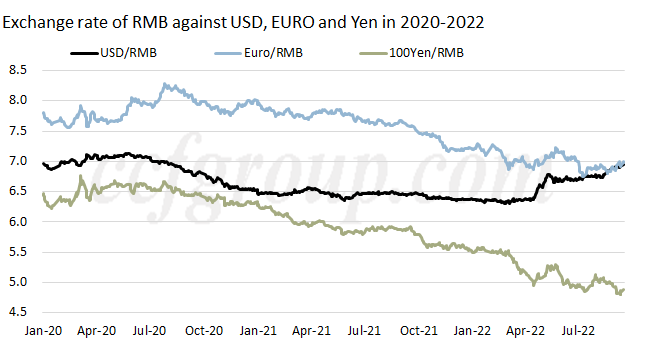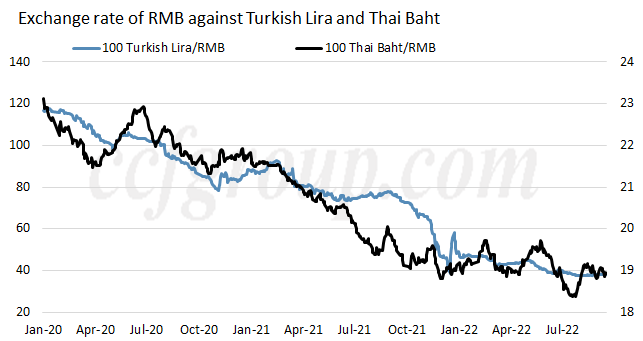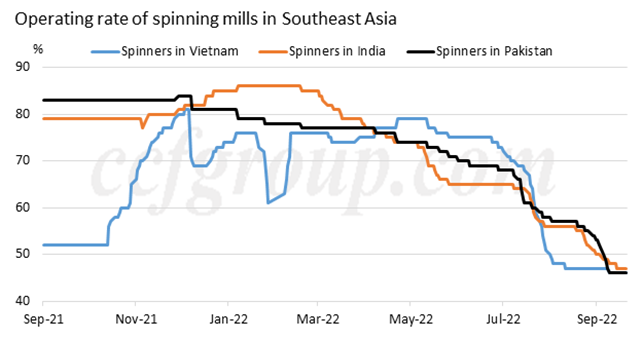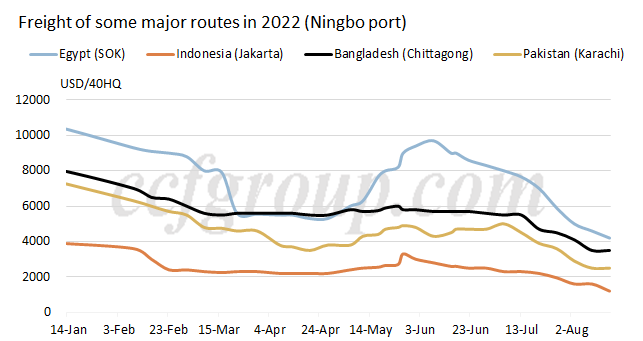Situation of foreign trade enterprises when RMB/USD exceeds 7
With the opening of the Fed interest rate meeting, the market began to expect the interest rates to raise by 75 basis points, US bond yields rose, and the US dollar index returned to 110. Last week, the offshore and onshore RMB exchange rates against the USD dollar have both exceeded 7.
Comparison of RMB and other foreign currencies
The exchange rate of RMB against the USD was above 7, mainly stimulated by firmer US dollar, while the exchange rate of RMB appreciated against other currencies.
According to the middle rate of the exchange rate of RMB against multinational countries announced by the People's Bank of China, the trend of some representative currencies are shown below: In order to be consistent for comparison, RMB/Turkish new Lira is converted to 100 Turkish new Lira/RMB, the same goes for Thai Baht.


It could be seen that the US dollar started strengthening obviously after the second quarter, while the exchange rate of RMB kept appreciating against other currencies. However, compared with 2021 and 2020, the speed of appreciation slowed down.
Such trend was mainly because of the following reasons: firstly, export advantage of Chinese companies weakened in 2020-2021, especially in Apr-May, 2022 amid the pandemic; secondly, under the background of successive interest rate increases in various countries, China has firmly introduced the problem of interest rate spreads brought about by the loose policy. In addition, it is also related to the complicated political factors in 2022.
Foreign demand softens
Actually, end-user market saw increasing demand or sales volume since Aug on monthly basis. It was mainly the recovery of domestic demand. Companies reflected that the foreign orders were weak in 2022. As a result, some enterprises started holding bearish view toward export in end-2022 and even 2023.
The spread of pandemic in some regions of China impacted the tempo of export orders in Apr, while companies in Southeast Asia saw good orders. Some export orders were heard to be transferred to Southeast Asia from China. However, companies in Southeast Asia also witnessed rapidly reducing orders recently. The overall trend could be described as consistent worldwide.

Foreign trade companies encounter complex challenge
Decreasing demand led to slipping sea freight worldwide. Excluding some ships for the transportation of commodities like oil and coal, the BDI index was also at bottom.

Foreign trade companies face complex challenge in recent months: the discussion of export price is risky with dropping sea freight; demand is weakening outside China; export orders slip with appreciating RMB; the liquidity of US dollar is tight.
The sea freight has kept diving in recent months and the later implementation meets problem, which brings about risk to the discussion of orders.
The exchange rate of RMB against USD depreciates while that of RMB against other currencies appreciates: the cost of imported products ascends under USD basis. As for export, Chinese products are not competitive. That means Chinese companies seem to be in dilemma now.
The continuous strengthening of the US dollar this year actually reflects the lack of liquidity of the US dollar. The sharp depreciation of many currencies against the US dollar and the rapid consumption of foreign exchange reserves have led to pressure in the exchange process. Foreign trade enterprises in China need to queue up to settle foreign exchange. As a result, companies deliver the orders, but customers do not have the money to pay.
- Top keywords
- Cotton Price
- Cotton Futures Price
- Cotton Futures
- CZCE
- PTA Futures Price
- Chemical Fiber
- Polyester Prices
- Wool price
- PTA Futures
- Shengze Silk
- China
- Yarn Price
- price
- China Textile City
- Fibre Price
- Benzene Price
- Cotton
- Index
- Cotton Index
- PTA
- fabric price
- NYMEX
- Top 10
- textile industry
- Spot Cotton
- Cotton Yarn
- Polyester Price
- Futures
- PTA Price
- cotton yarn price

